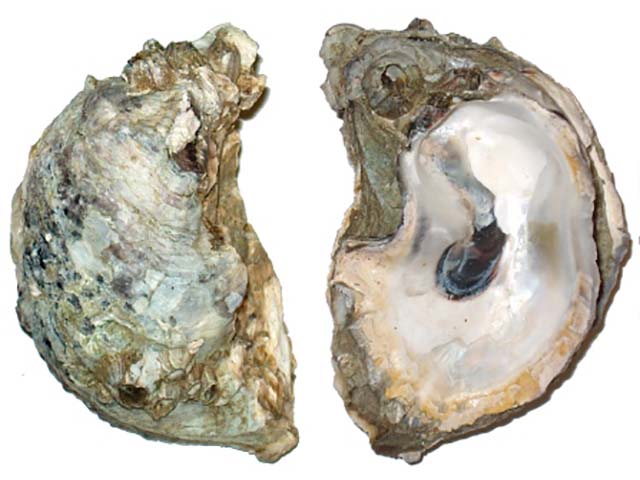| Ostreidae (oysters) |
| 30 cm SHH (male/unsexed); max. reported age: 2 years |
|
benthic; brackish; marine; depth range 0 - 79 m |
| Western Atlantic and the Mediterranean. Introduced in Northeast Atlantic and the Pacific Ocean. |
|
Diagnostic features: Shell thick and heavy, usually narrow and elongate, but extremely variable in shape. Upper valve flatter, smaller than lower valve; lower valve convex. Shell shape and outline variable. Shell margins undulating straight. Umbones long and curved. Colour: dirty to light grey, internally white with muscle scar deep purple (Ref. 271). |
| ################ Attached to rocks, other oyster shells, or other hard substrates (Ref. 271). Favors estuaries and embayments with low salinities and are intolerant of prolonged exposure to fresh water or marine conditions. They may either be filter feeders (Ref. 96280) or suspension feeders (Ref. 3248). Found in shallow water of tidal to subtidal depth of fairly constant turbidity and salinity (Ref. 3248) and salt marshes (Ref. 2823). Main sources of food are phytoplankton, suspended detritus particles (Ref. 96280) and bacteria (Ref. 101343). Able to regulate its feeding rates based on differences in size, type and composition of the food source (Ref. 96280). |
|
Not Evaluated (N.E.) Ref. 123251)
|
|
|
Source and more info: www.sealifebase.org. For personal, classroom, and other internal use only. Not for publication.

